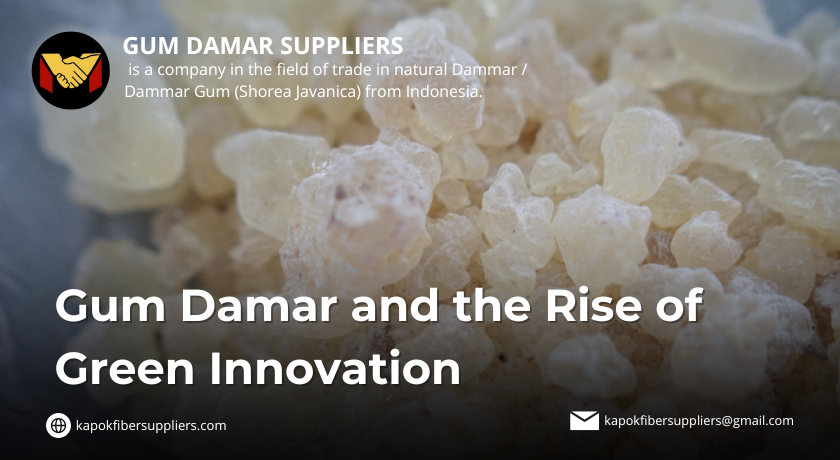
- The Future of Materials Is Rooted in Nature
- What Makes Gum Damar a Modern Marvel?
- Industrial Applications Gaining Momentum
- A Sustainable Supply Chain
- Challenges and Opportunities Ahead
- Conclusion: Innovation Can Be Ancient
- FAQ
The Future of Materials Is Rooted in Nature
As industries race to innovate sustainably, one unlikely hero is emerging from Southeast Asia’s forests: gum damar.
This age-old tree resin, once used solely in incense and painting varnish, is now attracting attention from scientists, eco-engineers, and product developers looking to replace petroleum-based compounds with natural, renewable alternatives.
And gum damar might just be the game-changer.
What Makes Gum Damar a Modern Marvel?
At a molecular level, gum damar is a complex mix of triterpenoid resins, making it incredibly versatile.
But what truly sets it apart is its biocompatibility, non-toxicity, and natural film-forming properties.
Let’s break it down:
🔬 Thermoplastic Behavior – Can be softened and molded with heat
🌿 Biodegradability – Breaks down naturally, leaving no toxic trace
🧪 Stable in Formulas – Ideal as a binding, glossing, or stabilizing agent
⚙️ Cross-Industry Compatibility – Works in cosmetics, adhesives, paints, coatings, packaging, and even electronics
In short, gum damar is smart material from nature — with applications far beyond its traditional use.
Industrial Applications Gaining Momentum
Here’s how gum damar is quietly revolutionizing multiple sectors:
🧴 Cosmetics & Personal Care
Used in lip balms, lotions, and natural perfumes as a fixative and glossing agent. It enhances consistency without synthetic polymers.
🎨 Eco-Paints & Varnishes
An excellent natural resin base for low-VOC coatings, ideal for conscious consumers and green building projects.
📦 Biodegradable Packaging
Emerging startups are now using gum damar as a coating for sustainable paper or cardboard packaging, reducing plastic use.
🕯️ Clean-Burning Candle Waxes
Gum damar adds firmness and fragrance diffusion while eliminating harmful soot common in paraffin candles.
💡 Research in Electronics
Some innovators are even exploring gum damar in bio-based dielectrics — sustainable insulators for low-voltage electronics.
A Sustainable Supply Chain
Unlike synthetic materials that rely on mining or fossil fuels, gum damar:
- 🌱 Grows naturally in biodiverse forests
- 🤝 Supports smallholder and indigenous harvesters
- 🌳 Encourages forest preservation over deforestation
- ♻️ Leaves zero long-term environmental waste
It’s not just what gum damar is — it’s how it’s produced that makes it genuinely sustainable.
Challenges and Opportunities Ahead
Of course, like all bio-based materials, gum damar faces hurdles:
- 📉 Limited large-scale refinement tech
- ⚖️ Variability in resin quality based on region and species
- 📦 Supply chain fragmentation across multiple small producers
But with growing interest from green-tech investors and R&D institutions, innovation is on the rise — and gum damar is set to scale.
Conclusion: Innovation Can Be Ancient
As industries look for ways to decarbonize, natural materials like gum damar offer a bridge between tradition and technology.
It’s a reminder that sometimes, the most advanced solution is not synthetic, but rooted in nature.
Gum Damar: Ancient Resin. Future Ready.